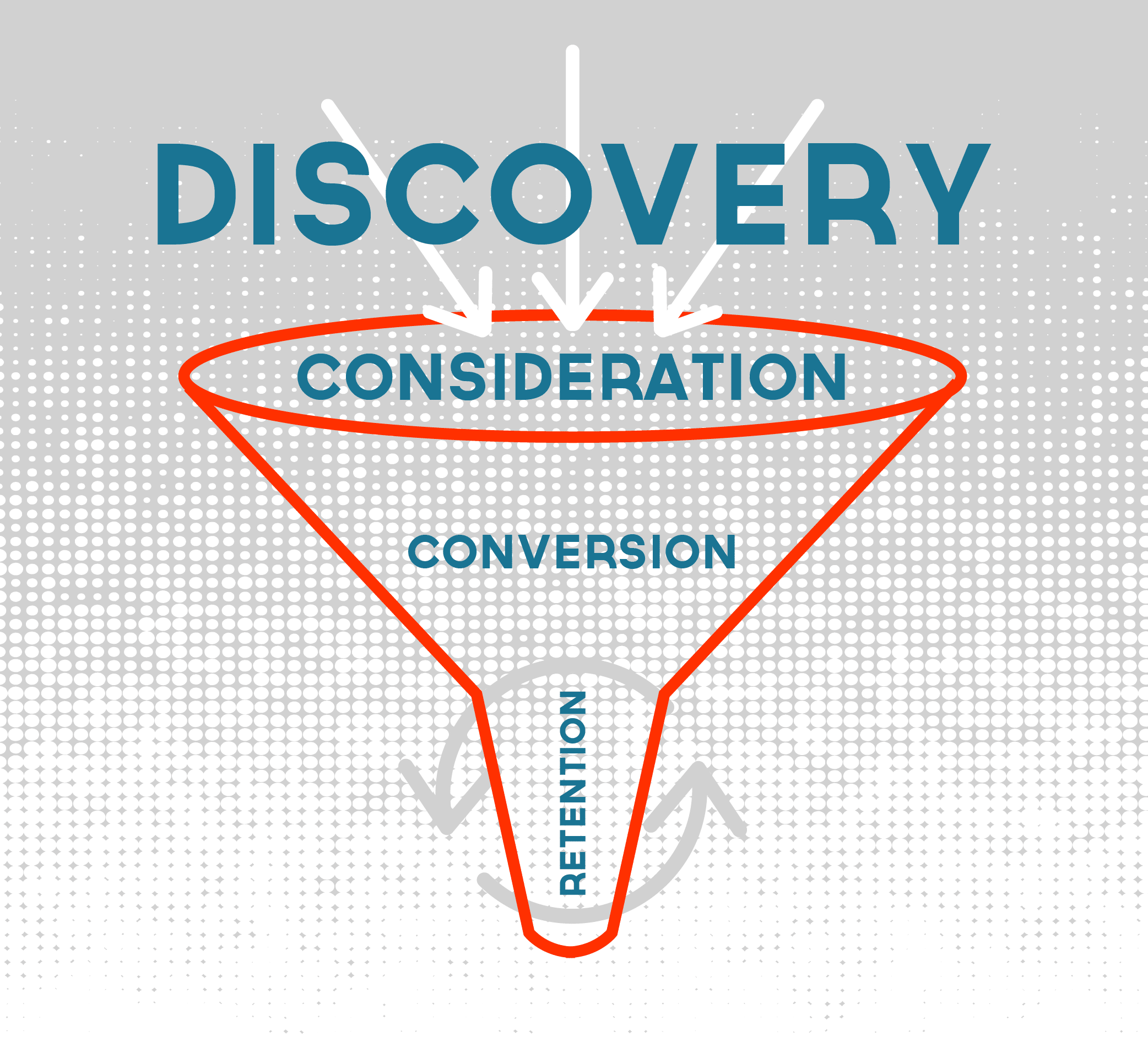If you want your online content campaign to be successful, it’s important to keep your attention firmly focused on your goals. If you are simply posting content at random, without a clear purpose in mind, then it’s not likely that your content will achieve the results you want. After all, the goal of all of your online content is to draw in customers. If your content isn’t doing that, it’s time to take a harder look at what you’re doing and what you might do differently to get better results. When content isn’t resulting in the kind of sales you’re aiming for, your first step should be to examine the buying process so that you can pinpoint where you’re losing your potential customers.
What Is the Content Funnel?
As a business owner, you’re probably already familiar with the concept of the sales funnel. It’s an invaluable tool for understanding how sales are made and how you can sharpen your marketing to increase your total number of sales. For online content, the funnel takes a particular shape. These are the four components of a content funnel:
- Discovery stage. At this stage, you’re simply trying to raise awareness of your brand and spread the word about your products and services. The goal here is simply to reach and educate your potential customers. You’re working to shore up your online reputation and expand your visibility as much as possible. Blog posts, eGuides, and social media posts are some of the types of content most commonly associated with the discovery stage.
- Consideration stage. When you reach this stage, you’re trying to make a more direct connection with your customers. At this stage, you’ll be giving your potential customers content that is more immediately related to your products and services. Product descriptions, how-to content, and demonstration videos are some of the most effective types of content at the consideration stage.
- Conversion stage. At the conversion stage, you’re working to turn your potential customers into actual customers. The goal here is to finish the task of persuading customers to make a purchase decision. When a customer reaches this stage, the types of content that are most likely to interest them include product reviews, customer testimonials, and simple and straightforward explanations of how to use your products.
- Retention stage. Once you’ve made a sale, that marks the end of the process, right? Not so. Now you’re faced with a new challenge: holding on to that customer you’ve just earned. Customer retention is one of the most important aspects of making sales. At this stage, your tactics should include keeping your company and products fresh in your customers’ minds and providing them with any help they need. Email newsletters, special offers, and follow-up calls and emails are some types of content that can be key to this stage.
Preventing Customers from Getting Lost
Now that you understand how the content funnel works, it’s time to look at where you could be losing your customers. If there are any weaknesses in your overall content campaign strategy, it’s better to identify them sooner rather than later. Here are some common reasons why your online content approach may be failing you:
- You aren’t using the content funnel. Every single piece of content you post online should be targeted toward one of the four components of the funnel. After all, the funnel isn’t simply an abstract concept—it’s an illustration of four very real elements of the sales process. Before posting a piece of content, ask yourself what customers it is aimed at—customers who haven’t heard of you, customers who are considering whether to buy from you, customers who are purchasing, or customers who might buy from you again in the future.
- You’re not giving customers enough information. Your customers need a certain amount of information about your products and services before they can make the decision to buy. If your website’s product descriptions are vague or uninformative, customers won’t be likely to want to purchase them. If you give only a vague rundown of each of your services—or, worse, if you leave out some of your services altogether—it’s going to have a negative effect on your sales. Informative content is essential for guiding your customers through the consideration stage.
- You’re not personalizing your emails. If the emails you’re sending out read like bland and opportunistic sales pitches, they’re not likely to retain many customers. Your emails should be customized for each segment of your customer base; you can use buyer personas to help you get a better sense of what each type of customer is looking for. Always address emails to a specific person, and try to tailor the email to that person’s job title. The more personalized you get, the more likely you are to get a positive response.
Are you concerned that you don’t have the content you need to win over your potential customers? If so, it’s time to talk to the team at Pennington Creative. We take a client-centered approach to content, changing up our style and format as needed to meet each new client’s particular needs. We offer a wide spectrum of content services—ranging from email newsletters to infographics to downloadable eGuides—to help our clients develop the comprehensive online presences they need to get noticed. If you’d like to learn more about the services we offer, feel free to contact us today.



